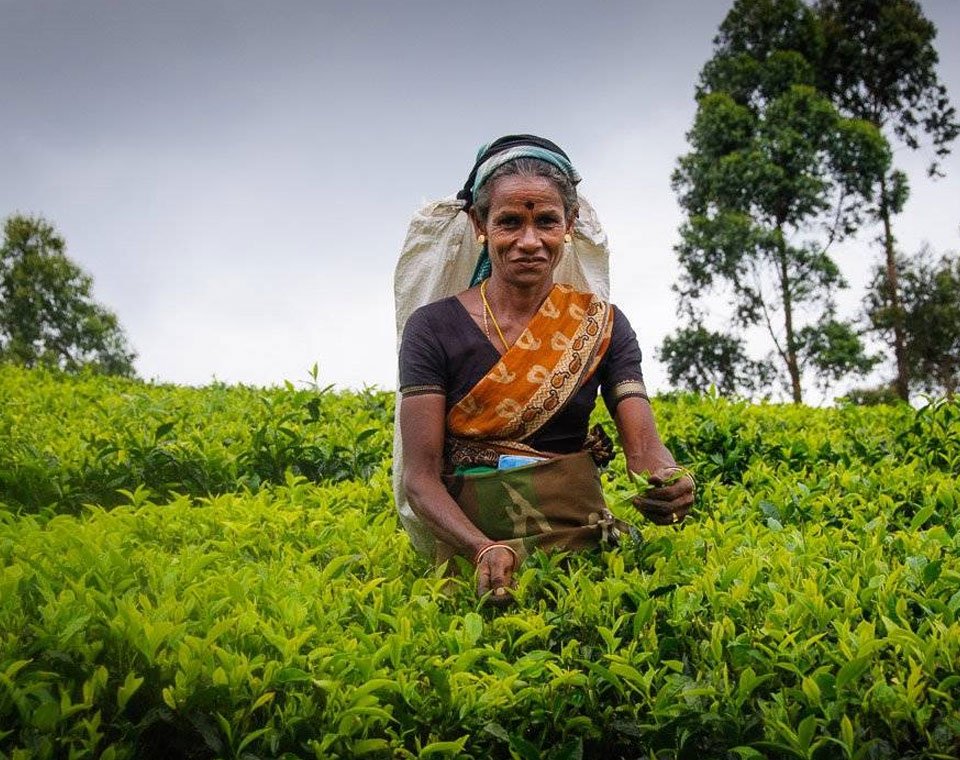Introduced in 1867, Ceylon Tea has grown to be the top agriculture export in Sri Lanka and provides direct and indirect employment to nearly 1 million people while around 4% of the country’s land area is covered in tea plantations amounting to nearly 203000 hectares.
Sri Lanka is an island made for tea. The country produces tea throughout the year and the total tea production is about 340 million kilograms per annum. Sri Lanka’s tea-growing areas are mainly concentrated in the central highlands and southern inland areas of the island. Tea grown in these areas is broadly grouped according to their elevations, with high-grown tea sourced from tea plantations found from 1200 m upwards; medium-grown tea from estates scattered between 600 m to 1200 m, and low-grown tea from sea level up to 600 m. In addition, Sri Lanka’s tea-growing areas are also divided into seven main regions based mainly on the terroir, namely Nuwara Eliya, Uda Pussellawa, Uva, Dimbula, Kandy, Sabaragamuwa, and Ruhuna. Each area produces a uniquely flavored Ceylon Tea, mainly due to the contrasting elevation, climate, and terrain in each region. Ceylon Tea’s distinct flavor is also governed by it being exclusively handpicked mainly according to the two leaves and bud method, and almost 93% of the Ceylon Tea produced annually is produced according to artisanal and orthodox methods compared to the CTC method practiced worldwide. At present, a larger portion of the country’s tea is exported as Ceylon Black Tea, while the country also produces Ceylon Green Tea, a type developed from Assamese seedlings. Ceylon White Tea, namely silver and golden tips is celebrated around the world for its finest flavor and is among the most expensive tea varieties in the world. The Ceylon Tea industry maintains the highest quality in the global tea market and ISO 3720 is the minimum standard that applies for the products. The country can produce the cleanest tea in the world in terms of minimum pesticide residues. Methyl Bromide was removed from the production process in 2012. Ceylon Tea also meets the stringent ISO 22000 series and the health & safety regulations stipulated by the European Community.
Ceylon Black Tea

One of the most celebrated drinks in the world, since its first consignment arrived at the London Tea Exchange in 1873, Ceylon Black Tea has been the lifeline of Sri Lankan exports and trade. Despite Sri Lanka’s adoption of other varieties of Ceylon Black Tea continues to be the country’s specialty.
Ceylon Green Tea

Although Ceylon Tea has long been synonymous with premium quality black tea since its introduction to the global markets in the 19th Century, Ceylon Green Tea, made from hand-picked buds and leaves mainly grown in the Uva and Nuwara Eliya regions of Sri Lanka.
Ceylon White Tea

One of the most exquisite, rare, and most expensive teas in the world, Ceylon White Tea is made from the hand-plucked fresh silver tea buds of the tea trees grown in the tea growing regions in high altitudes ranging from 2200m to 2500m. Ceylon White tea produces a very light brew with citrus and honey flavor and is usually consumed without sugar, honey, or milk. The unique flavor and color of Ceylon White Tea are mainly due to the unique harvesting and manufacturing process it undergoes in the hands of the expert tea makers.









